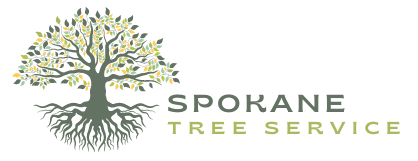As winter comes to an end, it’s important to start preparing your trees for the upcoming spring season. The harsh conditions of winter can cause damage to trees, making it essential to inspect them for pests and damage. Trees are a vital part of our environment, providing us with shade, oxygen, and beauty, so proper preparation is crucial to ensure their health and longevity.
Assessing the health of your trees is the first step in prepping them for spring. This involves inspecting them for signs of disease, pest infestation, and structural damage. If you’re unsure about the health of your trees, it’s best to consult with a professional arborist who can provide a thorough assessment.
Pruning before spring can remove dead or diseased branches, promote healthy growth, and prevent overcrowding. Removing dead trees and planting new ones can bring new life to your yard and add to the beauty of your landscape.
With proper preparation and care, your trees can thrive this spring and beyond, providing you with a sense of belonging to the natural world.
Key Takeaways
- Inspect trees for pests and damage in winter to assess tree health and identify potential issues early on.
- Consult with a professional arborist for a thorough assessment and proper pruning before spring to promote healthy growth and prevent overcrowding.
- Remove dead or diseased trees and branches to prevent hazards and improve tree structure and growth.
- Practice proper tree maintenance, including soil testing, fertilization, and regular pruning, for healthy and safe trees that benefit the environment.
Assessing Tree Health
The pre-existing knowledge emphasizes the importance of assessing tree health as a crucial step in preparing trees for spring.
One way to assess tree health is through pest inspection as winter can cause damage to trees. Inspecting for pests and damage can help identify any potential issues and allow for early intervention. If unsure of the tree’s health, a professional evaluation can give a more accurate assessment.
Another method to assess tree health is through a tree assessment, which can identify hazardous issues and allow for pruning or removal of diseased or dead trees. Pruning before spring can remove dead or diseased branches and prevent crowding, giving the tree more room to grow and thrive.
Removing diseased trees is important for yard safety as they can be home to insects and animals. Thus, assessing tree health is essential for ensuring the trees in your yard are healthy and safe.
Pruning and Removal
Pruning and removal are essential practices for maintaining the health and safety of trees. Regular pruning can remove dead or diseased branches, improve tree structure and promote healthy growth. Pruning also helps prevent overcrowding and encourages the tree to grow in a desired shape. However, improper pruning can lead to long-term damage and even death of the tree. Therefore, it is important to consult with a professional arborist to ensure proper pruning techniques are used.
When it comes to tree removal, safety precautions should always be taken. Dead or diseased trees can pose a hazard to people and property, and their removal can be a dangerous task. It is important to hire a professional tree removal service that has the necessary equipment and expertise to safely remove the tree.
Additionally, planting new trees in the place of the removed tree can bring new life to the yard and provide numerous benefits such as shade, improved air quality and aesthetic appeal. Overall, proper tree maintenance and removal practices are essential for maintaining a healthy and safe yard.
Preparing for New Growth
Preparing trees for new growth requires proper maintenance and removal practices to ensure a healthy and safe yard.
One important aspect of tree maintenance is understanding the soil composition and how it affects the tree’s growth. Soil provides the necessary nutrients for the tree to grow, but it can also become compacted or depleted over time. Testing the soil can help determine if it needs additional nutrients or if it needs to be aerated to promote healthy root growth.
Fertilization techniques can also play a crucial role in preparing trees for new growth. It’s important to choose the right type of fertilizer for the specific tree species and apply it correctly. Over-fertilization can harm the tree, while under-fertilization can stunt its growth. The timing of fertilization is also important; applying it too early in the season can cause the tree to prematurely bud, leaving it vulnerable to frost damage.
By understanding the soil composition and using proper fertilization techniques, trees can be prepared for new growth and thrive in the upcoming spring season.
Frequently Asked Questions
How often should trees be assessed for health?
Tree care requires regular assessment of tree health, ideally by an arborist every 2-3 years. Expert advice can identify potential hazards, diseases, or pests, and ensure proper tree maintenance. Professional assessment is critical for maintaining healthy and safe trees.
Can pruning be done during any season?
Pruning benefits trees by removing dead or diseased branches, improving air circulation and sunlight penetration. However, seasonal limitations exist, as pruning during active growth periods may stress the tree. Pruning is best done during dormant periods.
What are some signs of a hazardous tree?
According to tree hazard assessments, common signs of a hazardous tree include cracks in the trunk, dead branches, and root damage. Prevention measures include regular inspections by a professional arborist and prompt removal of diseased or damaged trees.
Is there a specific time of year to plant new trees?
The best tree species for spring planting vary by region, soil, and climate. However, fall planting offers benefits such as cooler temperatures and ample time for root growth before winter dormancy.
How can homeowners prevent pests from damaging their trees?
Integrated pest management practices can prevent pests from damaging trees. One study found that using preventive measures reduced the amount of insecticides needed by 71%. Proper pruning, monitoring, and utilizing natural enemies can all contribute to successful pest management.
